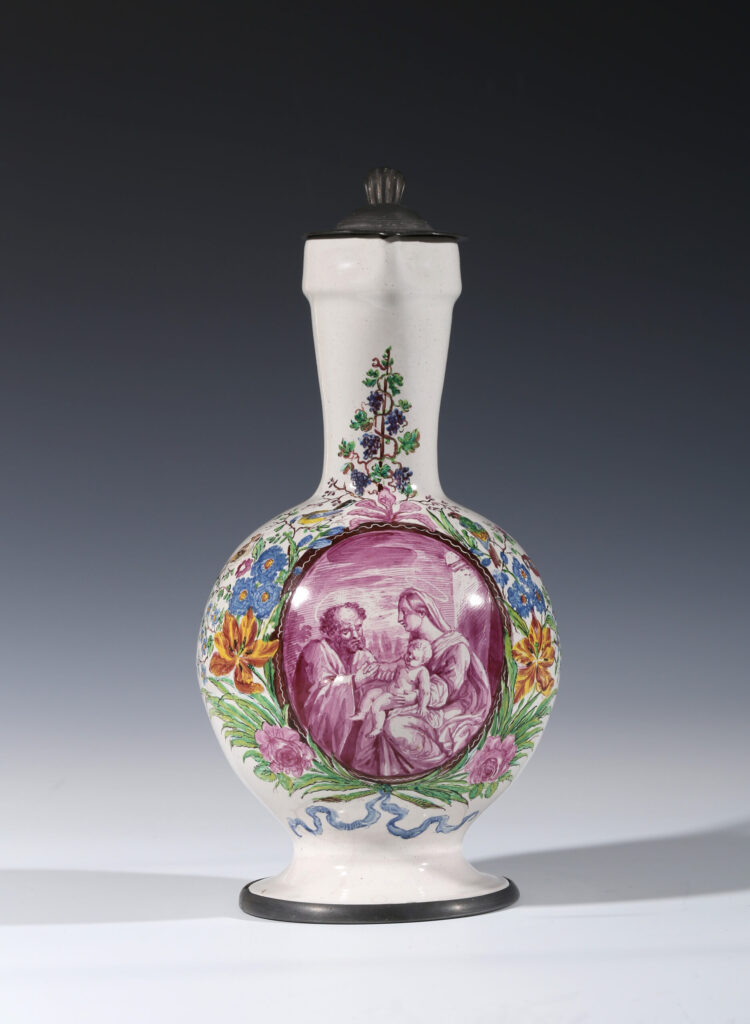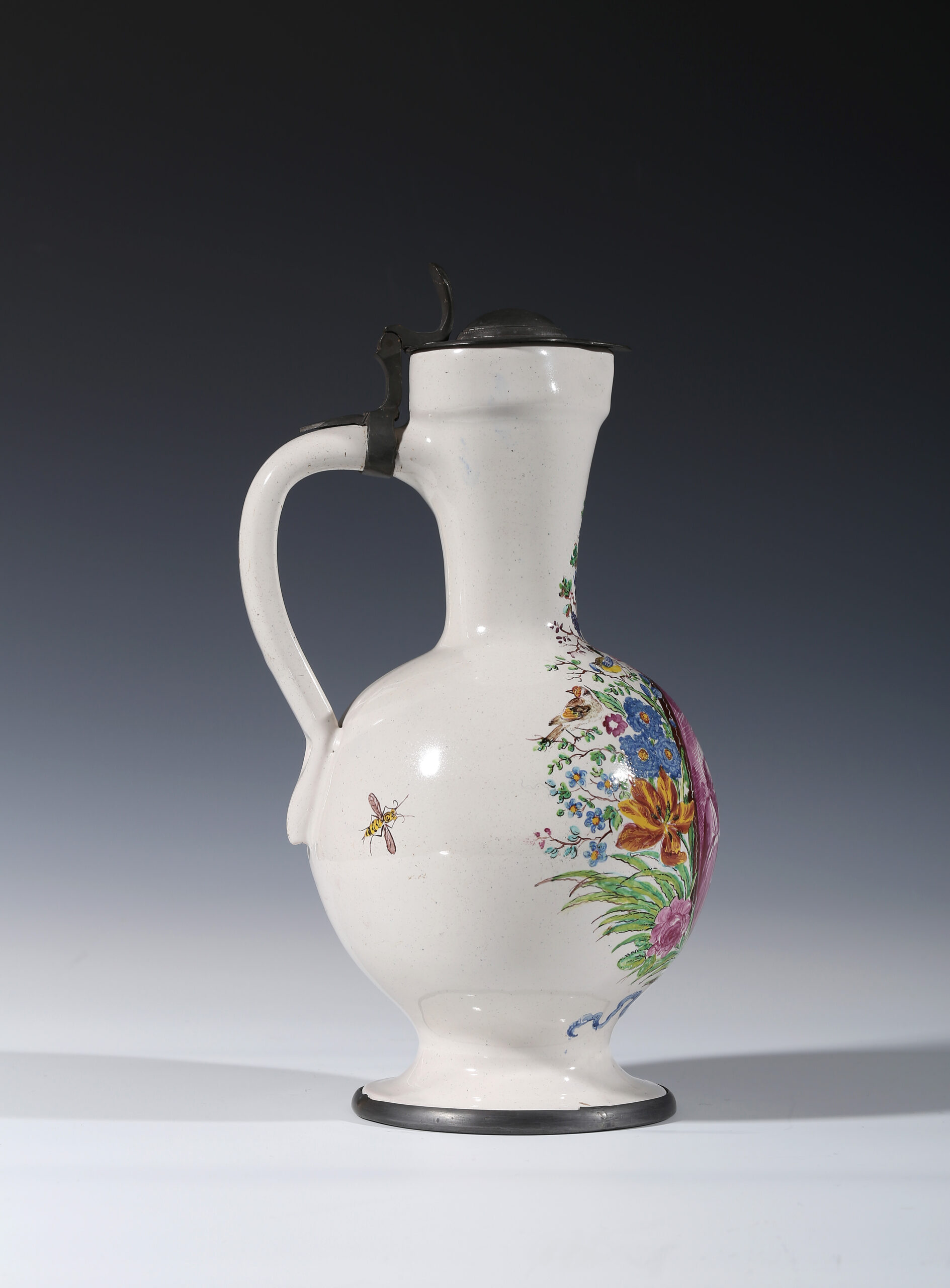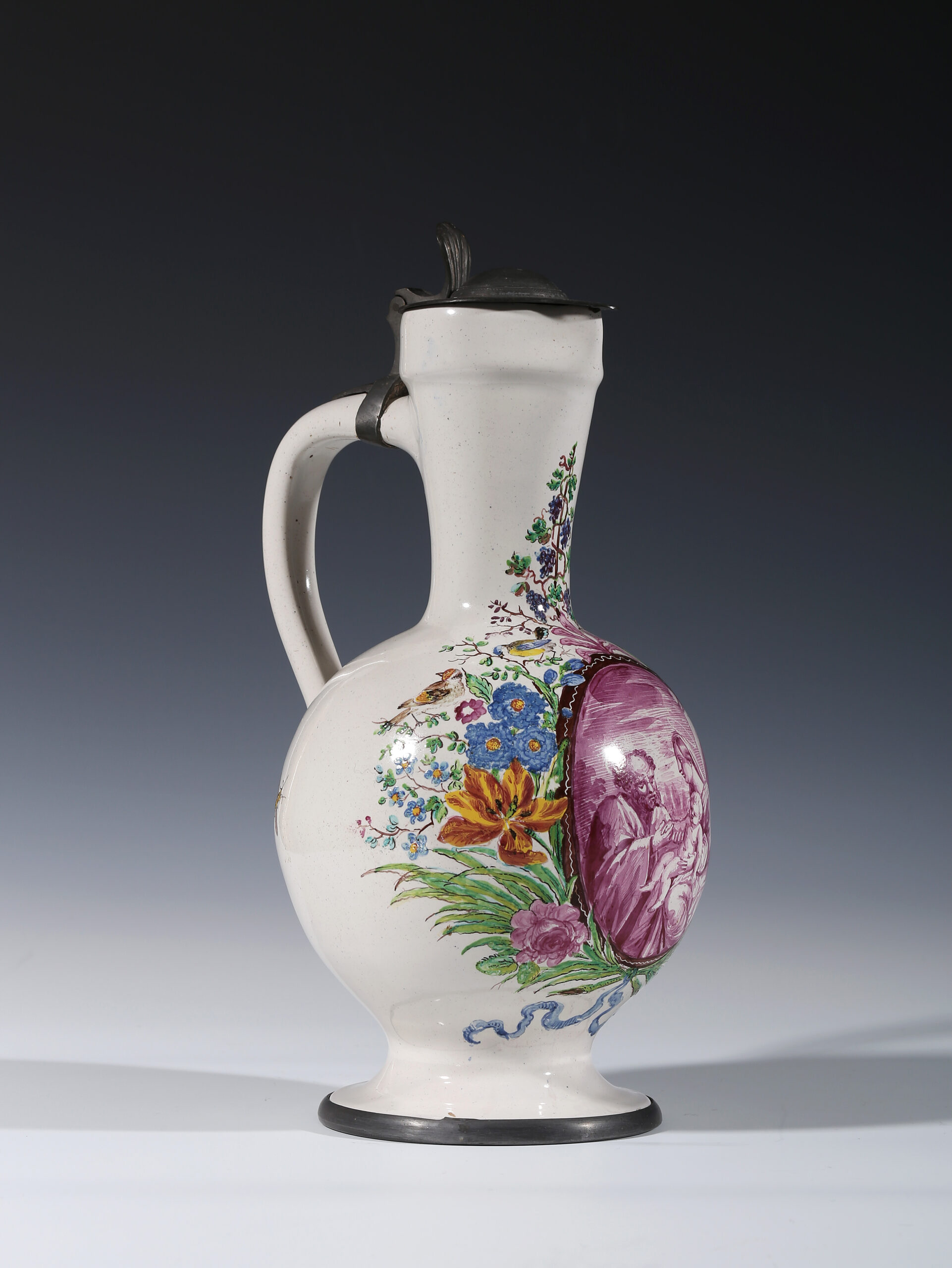
Decorated in purple camaieu with an oval roundel of the Holy Family, Joseph, Mary and Jesus. Surrounding them is an intricate wreath of flowers, branches and vines with two parrots, a blue tit and a goldfinch. Two insects cover firing imperfections.
Alfred Ziffer comments that Bartholomäus Seuter brought a new aesthetic to the tradition of hausmaler decoration that included rich borders of naturalistic flowers and birds and developed the use of cartouches, which became a model for his contemporaries.
Bartholomäus Seuter was the driving force behind the Seuter porcelain decorating workshop and is the name consistently mentioned in contemporary sources. In 1707 he married into a wealthy family of silk dyers and was inducted into their family trade. By the time of his father-in-law’s death in 1721, he was in charge of that business. At around the same time, he started being contracted to decorate porcelain for the Meissen factory. The 1721 inventory of the Meissen factory describes a ‘round partially gilt teapot with a pinched neck with an eagle instead of the spout and a clean handle, on which there is a small angel head, along with a round, partially gilt handle with a flat finial’. A year later records exist, in the Meissen archives, of payments to Bartholomäus Seuter from the Meissen factory for gilding porcelain. These contracts continue to at least 1729 and in them, he is described as a trading partner. On 10 December 1726 he was also given the privilege of ‘melting’ silver and gold onto porcelain by the city of Augsburg, in which it was expressly stated that it was ‘his invention’ to decorate in gold and silver. It is not clear exactly what the invention could have been as there were other decorators, such as Johann Aufenwerth and George Funcke who had successfully decorated Meissen porcelain with gold and silver gilt decoration too.

As well as running the workshop, Bartholomäus was responsible for a small number of very fine and characterful works on faience. They are distinctive for their elaborate borders of birds and flowers, sometimes gathered together at the base with a fluttering ribbon. They are mostly unsigned, but Siegfried Ducret illustrates a jug dated 1717 and signed BS and a small tankard signed BS, both in the Hamburg Museum für Kunst und Gewerbe and a further jug signed ‘BS’, for Bartholomäus Seuter. Two further jugs by the same hand also dated 1717 are known, both are unsigned and both are published in Pazaurek, one of them, in the Neuner collection, published again by Ziffer .
While Bartholomäus Seuter’s distinctive style of floral bouquets interspersed with native and exotic birds and insects is rarely found on Meissen porcelain and mostly reserved for faience, we do find some of his more ambitious pictorial scenes often in monochrome on some of the porcelain wares of the Seuter workshop.

Bartholomäus Seuter on Meissen, formerly in the West collection, sold at Christies
Condition:
Small chip to the top of the spout and abrasions to the rim
References:
Pazaurek 1925
Pazaurek, Gustav E., Deutsche Fayence-und Porzellan Hausmaler, vols. I & II. (Leipzig, 1925).
Ducret 1971
Ducret, Siegfried, Meissner Porzellan bemalt in Augsburg, 1718 bis um 1750, vols. I & II (Klinkhardt & Biermann, Braunschweig, (1971).
Ziffer 2005
Alfred Ziffer, Malerei und Feuerkunst, Fayencen der Sammlung Neuner, (Munich 2005).
Literature:
Manners 2024
‘E & H Manners, ‘Decorators on Ceramics and Glass’, 2024, no. 26
Price: £38,000








